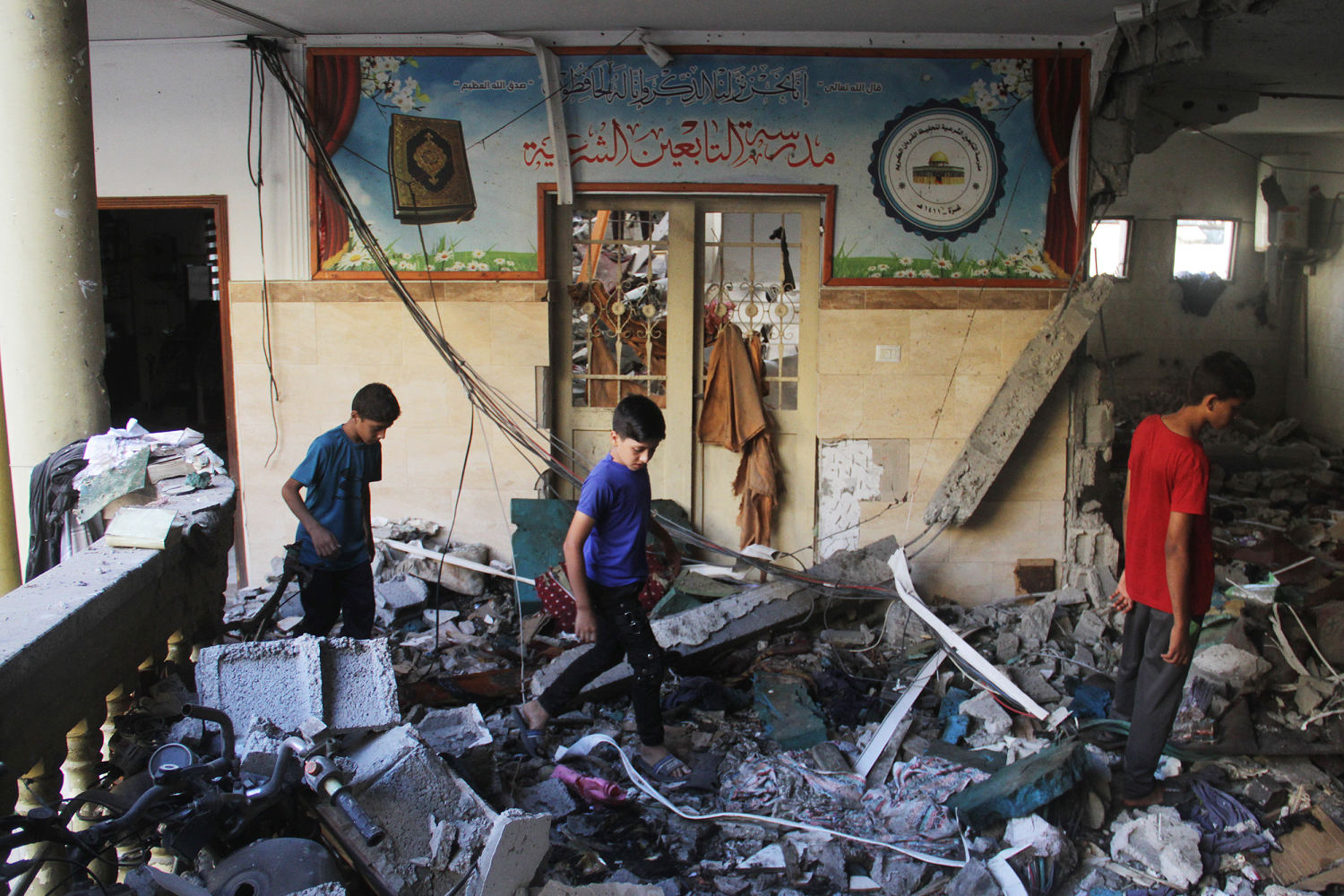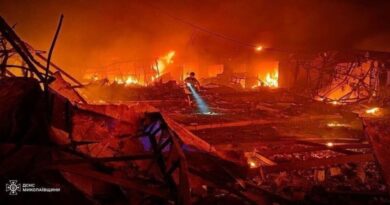Israeli attack hit Gaza school compound where charity taught children strike drills

The IDF said there was also a “high probability” that the commander of the Central Camps Brigade of the Islamic Jihad, Ashraf Juda, had been at the site, though it said it was not clear whether he had been killed in the attack.
Israeli officials did not provide evidence to back up their assertions.
Coordination of Government Activities in the Territories, or COGAT, Israel’s military liaison with the Palestinians, did not respond specifically to questions about the notifications Humanity & Inclusion said it sent Israeli officials, but added that coordination of requests for movement within Gaza can be “complex.”
The IDF meanwhile reiterated previous statements that it had taken “numerous steps” to mitigate the risk of harm to civilians.
Bloody remains
Video captured by NBC News’ crew on the ground in the hours after the attack shows bodies covered in bloodied shrouds as adults and children wander around the site. Wires hang from the ceiling as rubble and debris covers a red-stained floor strewn with bedding, books, a phone case and cans of food.
Nearly two weeks after the strike, Noah Al-Sharnouby, a first responder with Gaza’s Civil Defense agency, said he was still traumatized by what he had seen in Tabeen school.
“Anywhere you walked, body parts,” he said. “Anywhere you walked, there’s women and innocent children.”
Al-Sharnouby said he climbed stairs to find the head of an elderly man lying next to a small fire.
“I pushed the head from the fire … my body was shaking — I couldn’t bear the sight,” he added.
Many of the bodies were burned and dismembered beyond recognition, Gaza Civil Defense spokesman Mahmoud Basal told NBC News. In some cases, officials had little choice but to gather unidentified remains together to make up a whole body for those who had identified parts of their loved ones.
“Hands, legs, heads and remnants of entrails were placed in a bag and given to the citizen who identifies the body of his relative,” Basal said.
At least 93 people were believed to have been killed in the strike, according to the Gaza Civil Defense agency. Dr. Ahmed Radi at the Al-Ahli Arab Hospital in Gaza City said he believed the number could have been higher.
“Just about 80 were recognized by their families, and more than 20 people, no one can recognize them,” Radi said. “That was, like, the worst thing that I have seen.”
Mustafa Mahany, who said he had been sheltering at the Tabeen school since October after his home was destroyed, told NBC News that he couldn’t find the body of his eldest son.
“We only saw body parts of him,” he said.
Mahany said that in the days following the strike, he would also learn that two of his other children had been killed. A fourth was injured, he said.
“I want to submit a complaint against Israel,” Mahany said.
U.S.-made bomb
The IDF did not respond to questions about the dozens of civilians that local officials, first responders, humanitarian groups and hospital workers say were killed in the strike. IDF spokesman Rear Adm. Daniel Hagari said in a video statement shared on X that intelligence had suggested “no women and children” were present in the targeted area.
The IDF also said that “numerous steps” had been taken to mitigate the risk of harm to civilians, including the “use of precise munitions, aerial surveillance and intelligence information.”
It said the three precise munitions used in the strike “cannot cause the amount of damage” that was being reported by Gaza health officials and first responders, adding that “no severe damage was caused to the compound” targeted.
Video captured by NBC News’ crew on the ground shows part of the building’s interior and exterior heavily damaged but intact, with the floor covered in debris and rubble.
Three munitions experts told NBC News that at least one of the weapons used in the attack appeared to be a GBU-39, a U.S.-made 250-pound high-precision bomb manufactured by Boeing, based on an analysis of video shared on social media and verified by NBC News. The U.S. is Israel’s biggest arms supplier.
While the GBU-39 is designed for use in precision strikes and to reduce collateral damage, Richard Weir, an arms researcher at Human Rights Watch, told NBC News that the weapon can still have a significant impact if detonated in a closed and densely populated space.





